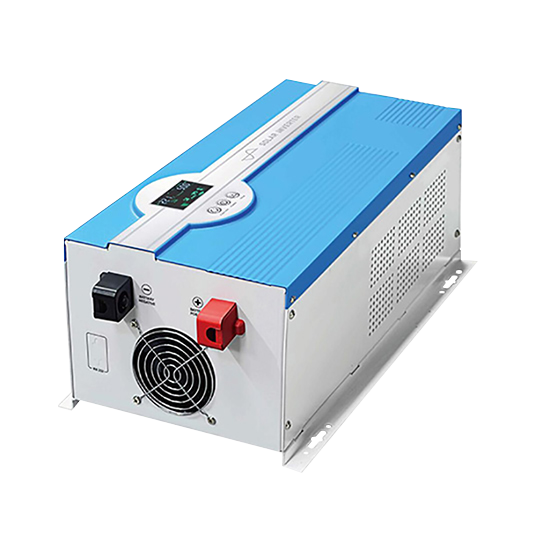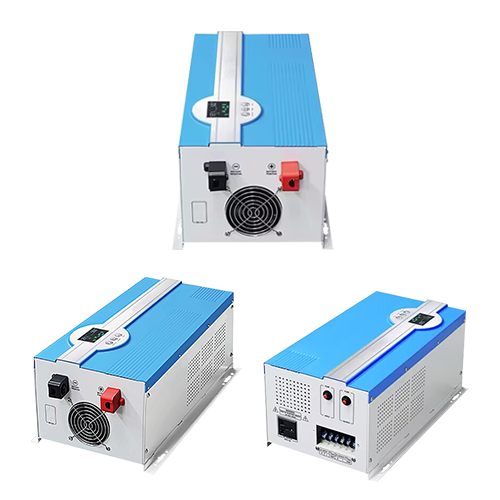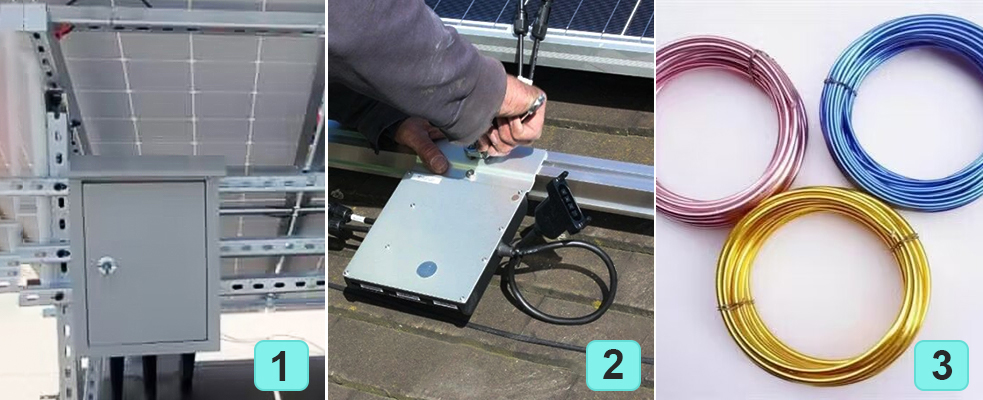An off-grid inverter is a device used in independent photovoltaic power generation systems that converts DC power
generated by solar panels or wind turbines into AC power for use by loads. Off-grid inverters manufactured by EnterSolar have superior performance and stable output, and are an important component of solar power generation
systems.
Installation of Off Grid Inverter
Step 1:
Before installation and commissioning, prepare the corresponding installation tools and measuring tools, such as
Phillips screwdrivers and diagonal pliers. Check whether the required accessories are complete. Wires and switches
should be selected according to the selection chart.
Step 2:
Lay the base at the intended installation location to ensure that the base is stable and level.
Install the inverter on the base and secure it with screws.
Step 3:
Confirm that all power switches of the machine are turned off. Confirm that the positive and negative terminals of
the battery are consistent with the input voltage of the machine.
Select a black wire with a suitable cross-sectional area and connect it in sequence: battery negative terminal ---
the negative terminal of the machine battery to complete the negative connection of the battery. Select a red line
with appropriate cross-sectional area. Battery positive pole - switch - the positive terminal of the machine
battery to complete the positive connection of the battery.
Select a wire with appropriate cross-sectional area and connect in order: (A live wire--switch--live wire
terminal/AC neutral--neutral terminal/AC
Depending on the power and type of load, adjust the configuration settings of the inverter.
Customer says
“ In the communication with suppliers, we will give high
praise to EnterSolar's inverter innovation and rigorous services. We are very interested in this product and the
technical service is excellent. The operation of the off grid inverter is easy to operate and stable.
”
- - - by Bhawna M- - -
Off Grid Inverter FAQ
What size inverter do I need for off-grid solar system?
The size of the inverter you need for an off-grid solar system depends on your specific power
requirements. To determine the right inverter size, follow these steps:
1. Calculate your total daily energy consumption in watt-hours (Wh). This information will help you
understand how much power your solar system needs to generate.
2. Consider the peak load, which is the maximum power your appliances or devices will draw simultaneously.
Ensure your inverter can handle this peak load.
3. Choose an inverter with a capacity slightly higher than your peak load to accommodate future expansions
or unforeseen power spikes.
4. Consider the type of inverter. Pure sine wave inverters are ideal for most appliances, while modified
sine wave inverters may suffice for basic needs.
It's advisable to consult with a solar professional to determine the exact inverter size for your off-grid
solar system to ensure efficiency and reliability.
What happens when off-grid solar batteries are full?
When off-grid solar batteries are fully charged, several important processes occur to ensure the system's
safety and efficiency. Excess solar energy is diverted to prevent overcharging, which can damage the
batteries. This is typically managed by a charge controller that regulates the flow of energy from the
solar panels to the batteries. Once the batteries reach their maximum state of charge, the charge
controller may reduce or completely disconnect the flow of energy from the solar panels.
In some systems, surplus energy may be redirected to power essential appliances or devices, such as water
heaters or additional loads. This practice is known as load diversion and is especially useful for
preventing energy wastage.
Additionally, the battery management system (BMS) monitors the batteries to ensure they remain within
their safe voltage and temperature limits. If batteries consistently reach full capacity, it may indicate
an oversizing of the battery bank, which can be costly and inefficient. Proper system design and
maintenance are crucial for optimizing off-grid solar setups.
What is the primary power source for an off-grid solar inverter?
The primary power source for an off-grid inverter is typically a combination of renewable energy sources
such as solar panels, wind turbines, or hydroelectric generators, paired with energy storage systems like
batteries. Off-grid solar inverters are essential for isolated or remote locations where access to the
electrical grid is either impractical or unavailable.
These inverters convert the direct current (DC) electricity generated by the renewable sources into
alternating current (AC) electricity suitable for powering appliances, lighting, and other electrical
devices. The energy generated by the renewable sources is stored in batteries to ensure a continuous power
supply, especially during periods of low or no energy generation. Off-grid inverters play a crucial role
in maintaining a stable and reliable power supply for off-grid homes, cabins, and various remote
applications, reducing the reliance on traditional fossil fuel-based generators.
What types of batteries are compatible with off-grid solar inverters?
Off-grid solar inverters are compatible with various types of batteries, with the choice depending on
specific requirements and preferences. Common battery options include lead-acid batteries, lithium-ion
batteries, and flow batteries.
1. Lead-Acid Batteries. These are cost-effective and widely used, with variations like flooded, sealed,
and gel batteries. They are reliable and suitable for most off-grid applications.
2. Lithium-Ion Batteries. Known for their high energy density and longer lifespan, lithium-ion batteries
are compact, lightweight, and efficient. They work well for off-grid systems with higher initial costs but
long-term savings.
3. Flow Batteries. These are emerging as an option for their scalability and durability. Flow batteries
store energy in liquid electrolytes and are adaptable for different off-grid setups.
Choosing the right battery depends on factors like energy requirements, budget, space availability, and
expected lifespan. It's crucial to consult with a professional to ensure compatibility and optimal
performance in your specific off-grid solar system.
Can I expand my off-grid solar system by adding more inverters?
Yes, you can expand your off-grid solar system by adding more inverters, but there are considerations to
keep in mind. The number of inverters you can add depends on your solar panel capacity and battery
storage. It's crucial to maintain a balance between the solar array, battery bank, and inverters to ensure
they work together efficiently. Consult a professional to assess your system's capacity and ensure the
wiring and components can handle the increased load. Expanding your system in this manner can provide more
power, but it must be done carefully to avoid overloading and inefficiency.
Related Solar Products
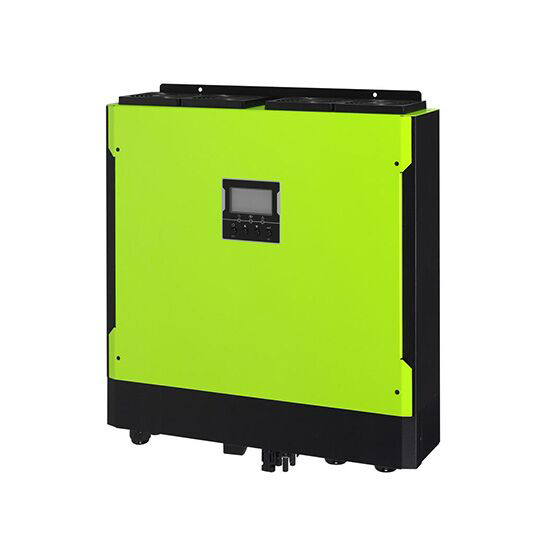
A hybrid inverter is a solar inverter with a built-in charge controller. It can also be a machine
combination of on/off-grid inverter.
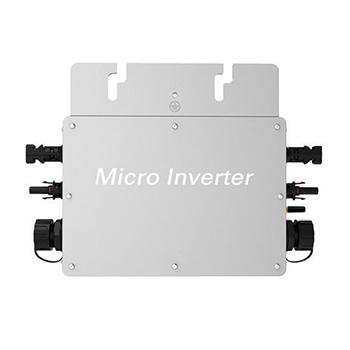
A micro inverter is a device that converts DC power from a single solar module into AC power. Each
component can independently convert current.
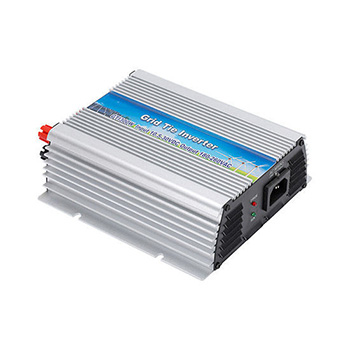
The biggest feature of the on grid-connected inverter is its great system power, used in renewable power
generation without battery storage.

